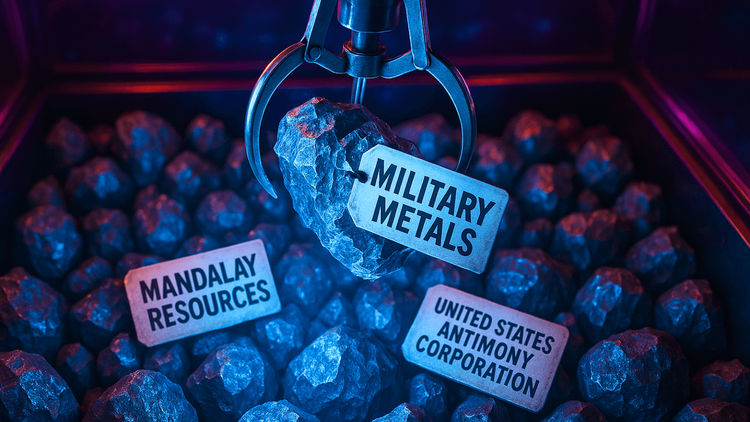Layoffs and Lift-Off: Intel’s Stock Gets a Jolt
Intel bets big on layoffs to revive its edge in the AI chip race and manufacturing war, but will the gamble pay off?

Intel's stock surged over 5% Wednesday morning following a Bloomberg report that the tech giant plans to cut up to 20% of its workforce. The timing couldn’t be more critical—just one day before its scheduled earnings release. Markets responded swiftly, and the rebound in share price shows investors may be welcoming the bold cost-cutting strategy. But beneath the surface, the story is more complex.
A New CEO, A New Era—But at What Cost?
Intel’s newly appointed CEO, Lip-Bu Tan, has wasted no time signaling major changes. In his first call with employees, he didn’t mince words—"hard decisions" were coming. The workforce reduction appears to be the first major move in what could become a sweeping transformation of the once-dominant chipmaker. Tan has acknowledged publicly that Intel “fell behind on innovation” and is aiming to pivot the company into two key growth areas: AI chip design and merchant foundry services.
This shake-up comes on the heels of deep pain for the company. Shares of Intel had cratered nearly 60% in 2024, and though the bleeding has slowed this year, the stock is still down nearly 3% year-to-date. Investors were looking for a course correction. Tan, known for his venture capital expertise and deep tech background, might be exactly the disruptor Intel needs. But layoffs on this scale risk pushing already-fragile employee morale further into the red.
The Merchant Foundry Bet
For decades, Intel’s identity was rooted in vertical integration—it designed and built its own chips. But Tan sees the future elsewhere. Intel Foundry Services (IFS), a business unit launched under former CEO Pat Gelsinger, is now being positioned as a key revenue engine. Rather than just manufacturing its own designs, Intel will now open its fabs to customers across the semiconductor ecosystem. It's a big bet in a business dominated by Taiwan’s TSMC.
But there’s a catch. While IFS is meant to usher in new efficiencies and market share, sources say internal confusion and management bloat have slowed progress. Former executives have described Intel as hamstrung by layers of redundant middle management and bureaucratic inertia. Trimming 20% of the workforce, many believe, could strip away that dead weight—but not without consequences.
An Industry in Flux and a Company on the Brink
Intel’s restructuring comes at a time of massive upheaval in the global semiconductor sector. Nvidia and AMD have outpaced Intel in the AI chip arms race, stealing both headlines and market share. Meanwhile, TSMC continues to lead in manufacturing technology, drawing away top talent and clients. Intel's bleeding has been compounded by leadership turnover and years of strategic missteps—failing to catch the AI wave early, struggling to deliver on manufacturing roadmaps, and overhiring in less profitable divisions.
Now, with the rollout of its 18A manufacturing process looming, Intel is at a fork in the road. The 18A node is supposed to be a game-changer, a breakthrough that could allow Intel to reclaim technological parity—or even leadership—over rivals. But insiders warn that slashing headcount could delay the process or destabilize the teams building it.
Morale, Momentum, and Market Perception
Two current manufacturing employees speaking anonymously to Yahoo Finance expressed concern that the looming cuts would create chaos. They said morale is already at a low point, and with the company aiming to reinvent itself, the uncertainty isn’t helping.
Still, markets are a different beast. Wall Street thrives on efficiency, and the idea of a leaner Intel is, at least for now, being celebrated. The stock rose 5.6% on the Bloomberg report. Investors seem to believe that painful medicine might be what this aging tech titan needs to heal.
A History of Bloat and Burnout
Intel’s workforce had ballooned under Gelsinger, growing by 10% during a hiring spree shortly after he became CEO in 2021. But by 2022, that strategy reversed. The company slashed 12,000 jobs. By 2024, another 15,000 were gone. This new round could be even more aggressive, targeting an additional 20% of the company’s remaining headcount. In raw numbers, that’s tens of thousands of jobs.
Former Intel insiders have pointed fingers at what they call “overgrown middle layers,” blaming poor internal communication, slow decision-making, and politics for the company’s stagnation. Trimming the fat might help in the short term, but there’s a fine line between lean and crippled.
Tan’s Quiet Revolution
Unlike his predecessors, Tan isn’t charging forward with fanfare. He’s been calculated, cautious, and vague—publicly at least—about his strategic roadmap. But behind the scenes, insiders suggest he’s moving quickly. Multiple execs have either resigned or been pushed out since he took over. The workforce cut could be just the beginning of a broader reshaping effort.
Tan also brings a venture capitalist's mindset to the table. That means a sharper eye on return on investment, a willingness to sunset underperforming divisions, and perhaps a focus on faster, nimbler execution. Whether that style can mesh with Intel’s entrenched engineering culture remains to be seen.
Competition Isn’t Waiting
While Intel plots its reinvention, the rest of the chip world isn’t standing still. Nvidia is crushing earnings thanks to its dominance in AI hardware. AMD has been steadily gobbling up server and laptop market share. And TSMC? They’re so far ahead in manufacturing, many believe Intel’s only path to relevance is to cooperate rather than compete.
Some investors have even floated the idea of Intel spinning off or selling its manufacturing division altogether. That would have been unthinkable a decade ago—but these days, no idea seems too radical.
Wall Street's Verdict: Optimism, With a Side of Caution
The market clearly sees the job cuts as a step in the right direction. But execution will be everything. Investors are looking for results, not promises. When Intel reports earnings Thursday after the bell, all eyes will be on margins, guidance, and any clue about Tan’s roadmap.
Will the workforce reduction result in a more agile, innovative Intel? Or will it mark the beginning of a slow-motion collapse for the company that once defined American semiconductor supremacy?
The next chapter begins now.
Conclusion
Intel is at a defining crossroads. With a new CEO, an evolving business model, and sweeping layoffs, the company is either about to rediscover its edge or lose it for good. Wall Street likes the direction—for now. But rebuilding market confidence after years of stumbles is no easy feat. As Intel pivots toward AI and foundry services, the stakes couldn’t be higher.






